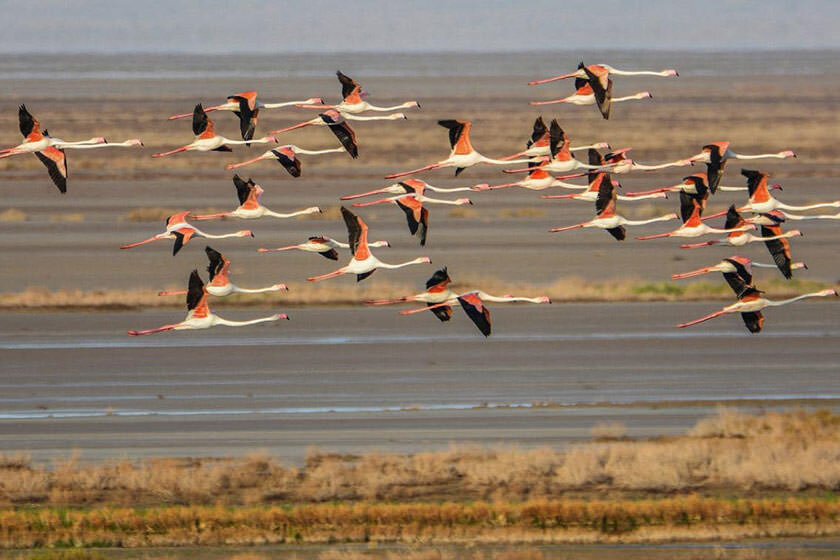Gavkhouni wetland playing host to migratory flamingos

TEHRAN – Gavkhouni wetland, where the desert and the river meet to create a pristine and spectacular view of the wetland in the heart of the desert, has opened its arms hosting flamingos and many other migratory birds over the past two years.
Gavkhouni wetland, stretching to 47,000 hectares, is a salt marsh with an average depth of about 1 meter which is located on the terminal basin of the Zayandeh-rud river.
It is the 19th wetland in Iran designated as a Wetland of International Importance on the Ramsar list, which as defined by the Ramsar Convention for the conservation and sustainable use of wetlands, recognizes the fundamental ecological functions of wetlands and their economic, cultural, scientific, and recreational value.
The Convention was adopted in the Iranian northern city of Ramsar in 1971 and came into force in 1975.
The wetland is now home to a variety of migratory birds including, ducks, geese, sternidae, pelicans, and grebes. Flamingos have left the wetland over the past 2 years following the wetland drainage and lack of nutrition. However, they winged their way back to the wetland after the water flowed into the lakebed.
Wetland enthusiasts are well acquainted with Gavkhouni and other pristine natural areas. This is a destination for tourists who want to enjoy the pristine and untouched nature away from the crowds and to be inspired by the beauty of the region and the silence of the wetland.
Seeing migratory birds in the lakebed is a pleasure that is not easy to ignore. Every year, as the weather cools and winter enters, thousands of migratory birds enter Iran from cold regions, including Russia.
Although winter migrants travel in the warm season, the wetland also hosts guests from the south in the summer. Apart from migratory birds, it is also home to native animals, such as Asiatic mouflon, boars, Rüppell’s sand fox, turtles, vipers, rabbits, goats, and bats.
The vegetation of the area is very special. Due to the salinity of the soil, there are no green plants and trees around the lake, but in the wetland, different species such as Cattail, reeds, Schoenoplectus, curled pondweed and various algae grow. Shrubs such as Haloxylon, Ephedra, Atraphaxis, and Seidlitzia Rosmarinus can be found around the lagoon.
FB/MG
Leave a Comment